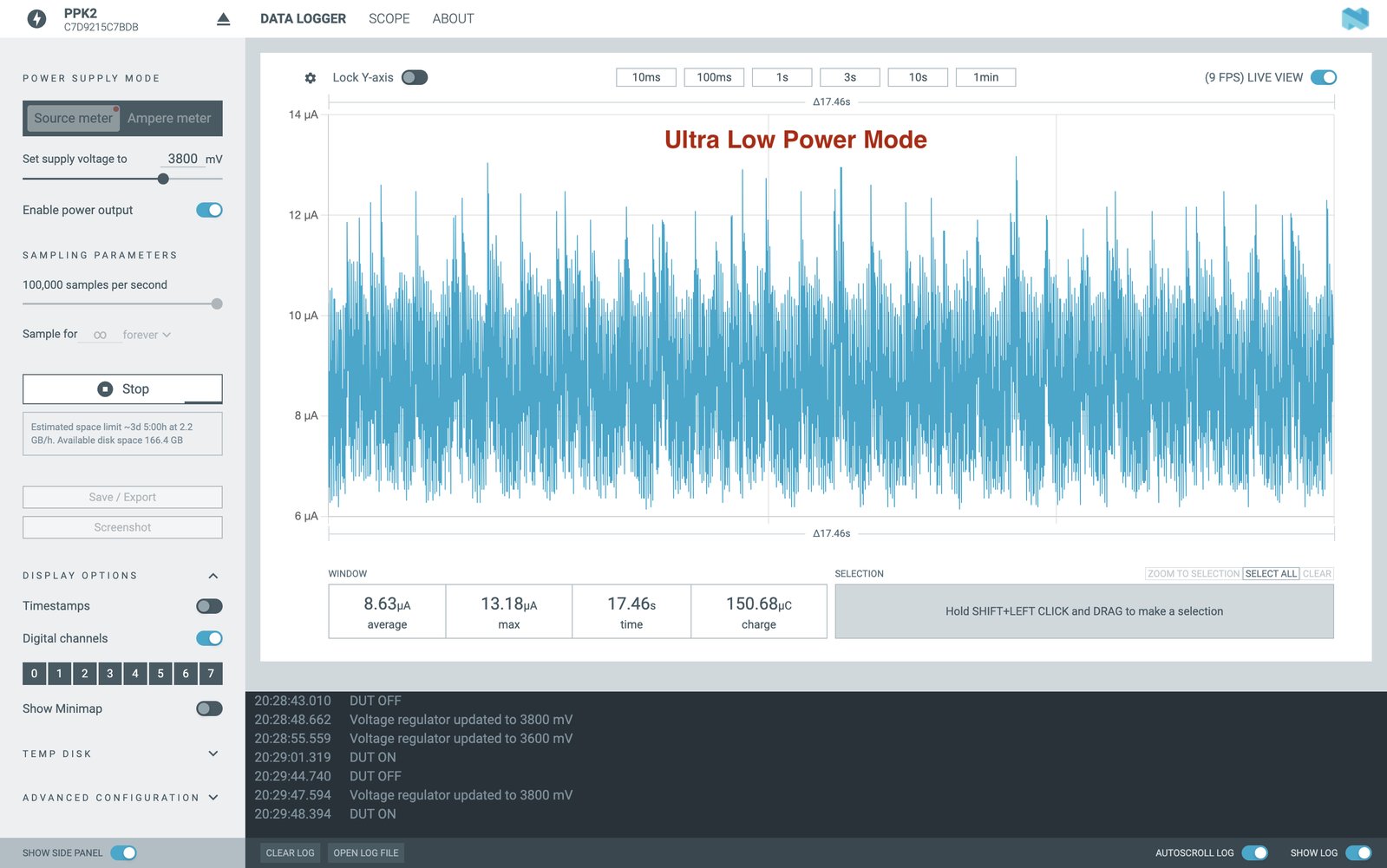Project update 3 of 9
Power Consumption: How Low Can You Go?
by Rajeev PiyareA huge thank you to all our backers who have supported our campaign so far. For our subscribers, there’s still a chance to grab the early-bird discounts before they run out! Please note that these discounted offers are available only until the end of the campaign, with competitive worldwide shipping thanks to Mouser and Crowd Supply.
Power Consumption and How Low Can You Go with Stratus Pro?
Battery life is crucial for many products we use daily: our phones, cars, vacuums, watches, headphones, rings, mice, keyboards, and more are all becoming battery-operated. While some might prefer to keep these devices plugged in, many IoT devices are remotely deployed and battery-operated, making device longevity paramount.
In this week’s update, we’ll measure the current consumption of the Stratus Pro using the Power Profiler Kit II.
Device Operating Modes
Most battery-powered devices spend much of their time asleep, waking up to perform functions, and then going back to sleep. For these applications, battery life depends on three major aspects of the microcontroller:
- Run/Active mode: The device uses the most power (fetching sensor data, communicating with the Cloud, running algorithms, etc.)
- Standby/Idle mode: The “do-nothing” state (an idle thread, sleeping in a while loop, etc.)
- Sleep Mode: The deepest internal power-saving mode the system can enter (UART OFF mode for Stratus Pro)
The “do-nothing” state of the microcontroller often has many different forms, such as start-up time (how long it takes the microcontroller to go from the do-nothing state to running the application state) and the application runtime.
Power Consumption of Datacake MQTT Example
For our first example, we’ll measure the current consumption of Stratus Pro running an MQTT sample application that fetches sensor data and transmits it to the Datacake platform.
From the image, the most power-intensive phase is the initial connection to the cellular network, followed by connecting to the Datacake platform and sending the sensor data message. Once connected to Datacake Cloud, the device doesn’t need to repeat the process unless the IP address changes, or it’s using a different device ID. During this handshake, a current spike of ~140 mA occurs as the modem uses its RF circuitry to transmit and receive data from the cellular tower. Additionally, the device requests Power Saving Mode (PSM) from the cellular network. In the second phase, the application drops to Idle mode, and the modem is turned off, with a sustained current consumption of ~18 uA.
In the second application, which we call deep sleep mode, the Stratus Pro initializes the modem (putting it into low-power mode). Then it disables the UART, consuming less than 9 uA for the entire device. While we successfully reduced current consumption by disabling the modem, further gains were achieved by disabling the UART peripherals. This demonstrates the low-power design of the entire board, achieved by optimizing both the hardware and firmware.
In future updates, we’ll delve into the hardware design aspects that enabled us to achieve such a low-power design, allowing Stratus Pro to run entirely on battery for months if not years.
Do you have any burning questions or topics you’d love to see covered? Reach out and let me know! Until then, thanks again for your support, and I’ll see you next week. For questions and discussion, contact us via the Ask a Question page. We’re more than happy to help and guide you.
-Rajeev






